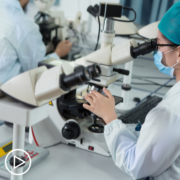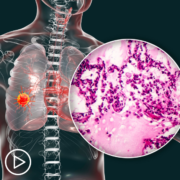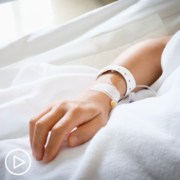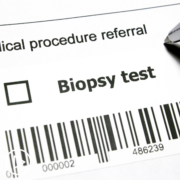Myeloma Research Highlights From ASH 2023
Myeloma Research Highlights From ASH 2023 from Patient Empowerment Network on Vimeo.
Dr. Timothy Schmidt, a myeloma specialist, walks through research and treatment news from the recent 2023 American Society of Hematology (ASH) annual meeting.
Dr. Timothy Schmidt is an Assistant Professor in the Department of Medicine, Division of Hematology, Medical Oncology and Palliative Care at the University of Wisconsin School of Medicine and Public Health. More about Dr. Schmidt.
Related Resources:

|

Expert Perspective | Understanding the Recent FDA CAR T-Cell Therapy Warning |

|
Transcript:
Dr. Timothy Schmidt:
So, there’s constantly a lot of new information and data coming out about multiple myeloma and new therapies. I would say at this ASH ’23 meeting, I think the biggest highlight is further confirmation of the utility of using CD-38 antibodies in patients with newly diagnosed multiple myeloma. We have a plenary abstract for the use of isatuximab (Sarclisa) in combination with carfilzomib (Kyprolis), lenalidomide (Revlimid), and dexamethasone (Decadron) that I’m anxiously awaiting hearing the data of later today, as well as a late breaking abstract talking about the use of daratumumab in combination with bortezomib (Velcade), lenalidomide, and dexamethasone.
And both of these are studies that appear to show superiority of a four-drug regimen over a three-drug regimen. And we’re certainly looking forward to seeing the finalized data presented and extending the implementation of these highly effective therapies for patients with newly diagnosed multiple myeloma.
I think what we’re also seeing here is just further data being presented about bispecific antibodies, CAR T-cell therapies, and other novel combinations in the relapsed and refractory setting, as well as some really interesting insights coming out in terms of the myeloma pre-cursor setting of MGUS from the IStopMM Trial and some other research. So, really excited to learn more about how to use all of these exciting new tools that we’ve got for patients with multiple myeloma across the disease spectrum.
So, what this news means for myeloma patients is that outcomes are getting better. What it means is that we now know how best to use some of these tools that we’ve been developing for over a decade now in terms of maximizing responses, maximizing the number of patients who achieve remission and not just achieve remission but have a lasting remission in that first-line setting. And this is really going to lead to improved survival as well as improved quality of life when we start seeing year upon year of really high-quality survival from most of our patients with multiple myeloma.
We’re also learning how best to use some of the even newer therapies. T-cell directing therapies such as CAR T-cells and bispecific antibodies. We are incredibly excited about how effective these drugs are for patients with multiple myeloma.
And these are things that we’re already using in the clinic. And it’s important for patients to be aware so that when it becomes time to use these strategies that we can make sure that all patients have access to them.










